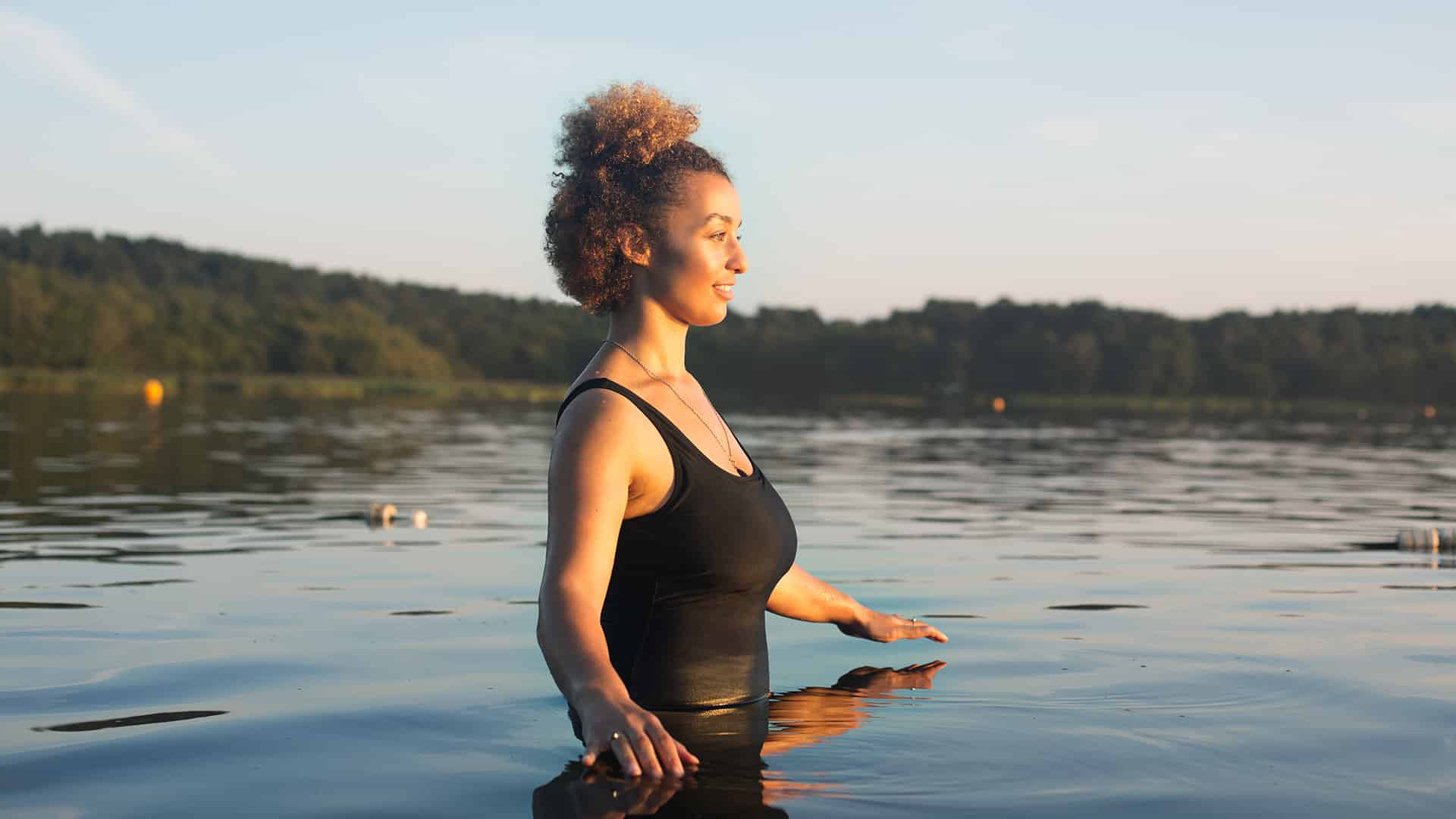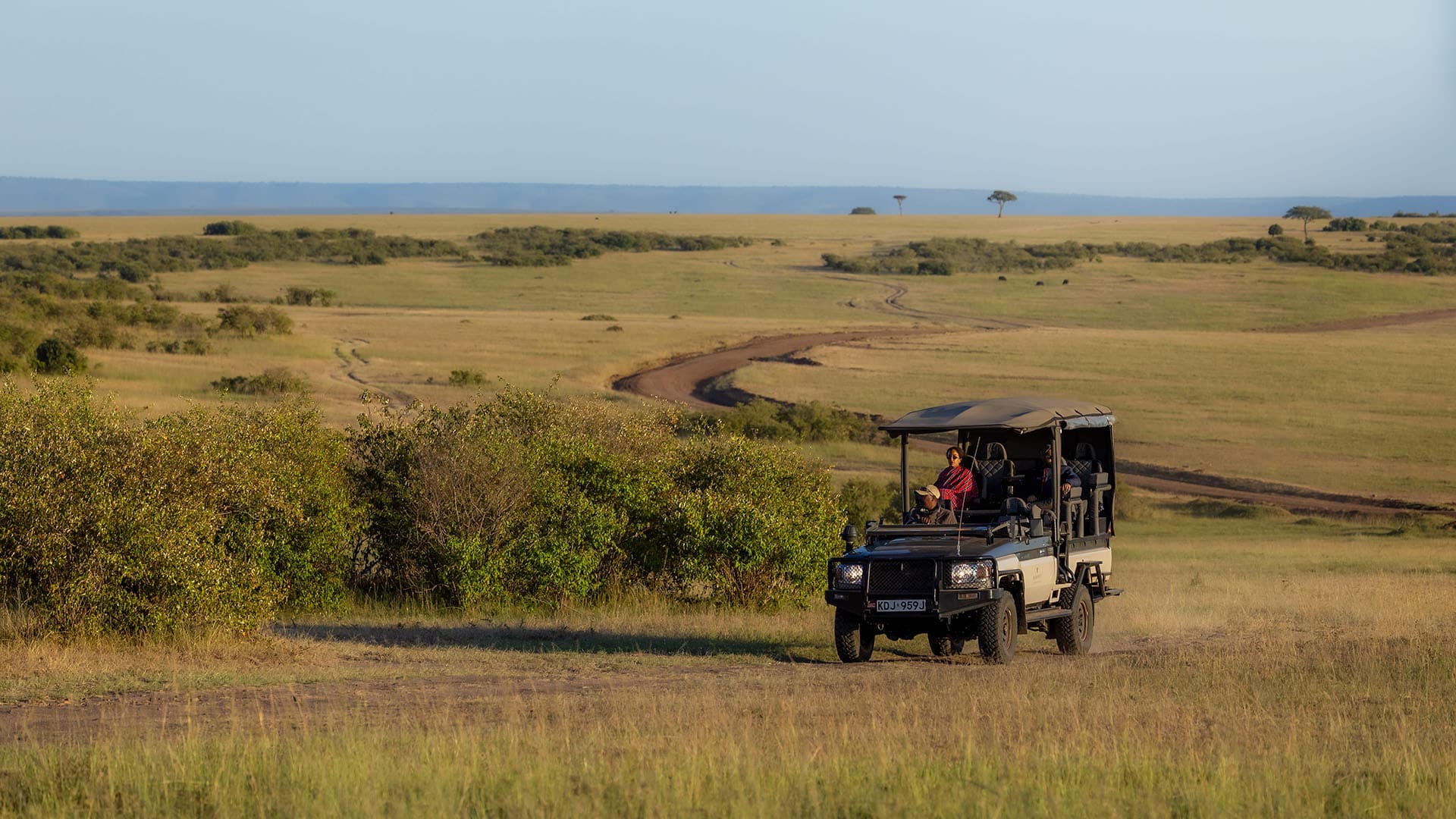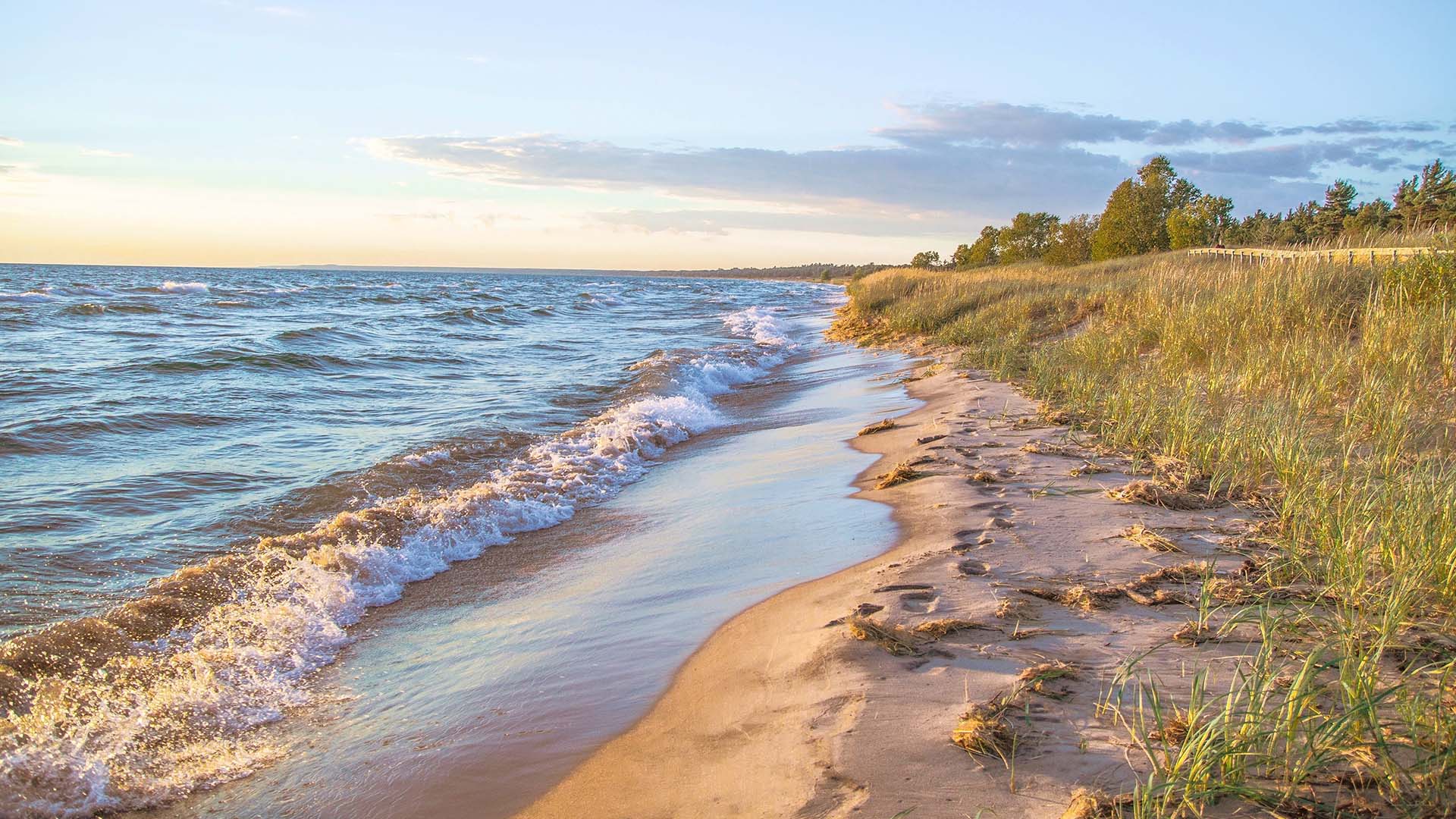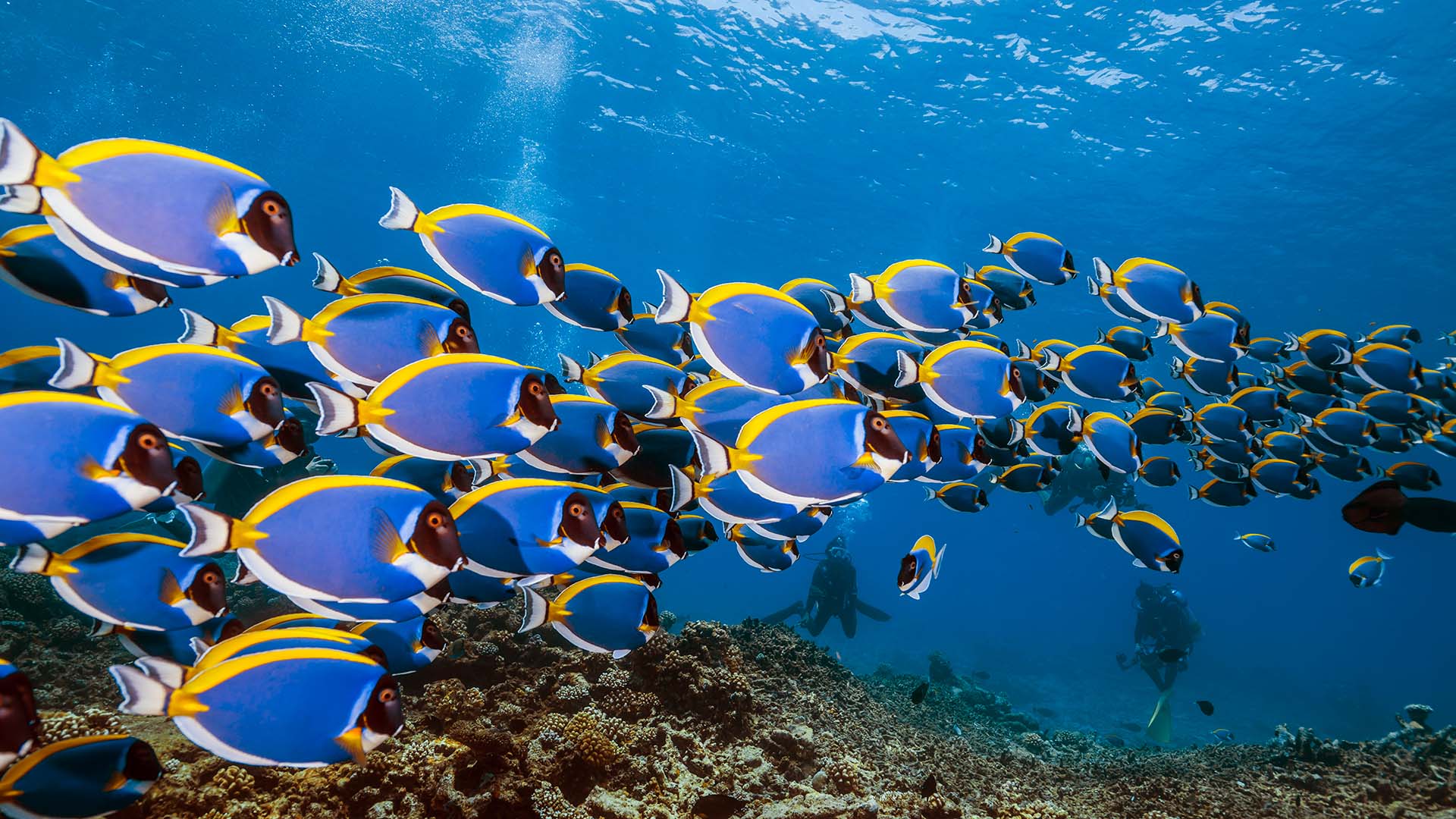
You’ll find some of the world’s most colorful ocean life in The Maldives. (Photo: Getty Images)
OutdoorsThe Rookie’s Guide to Diving in the Maldives
By James StewartThe Maldives offers some of the most pristine waters—and most spectacular undersea life—on Earth. So you want to dive but don’t know how to begin? Here’s the ultimate expert intro — plus some tips on more of The Maldives’ hottest dive spots
Why learn to dive in The Maldives?
Try calm seas at bath temperature and visibility circa 82 feet for starters.
Then there’s the rich ecosystem that the mid-ocean location supports: manta rays, sharks and tuna can be spotted in open-ocean sites, while tropical fish, turtles and nudibranchs frilled like Regency dandies glide by on shallow reef dives.
In a country composed of atolls, there’s also the sheer abundance of dive sites. As a divers’ nursery, this is as good as it gets.
Do I have to do a course?
Accredited dive centers run half-day tasters. On the “Discover Scuba Diving” course, you’ll learn basic skills and experience the wonder of soaring weightlessly beneath a silvered surface—the closest most of us will come to the sensation of being an astronaut—and seeing coral reefs that teem with fish. It’s fantastic. Small wonder many people sign up for the four-day qualification course.
Do I have to be a good swimmer?
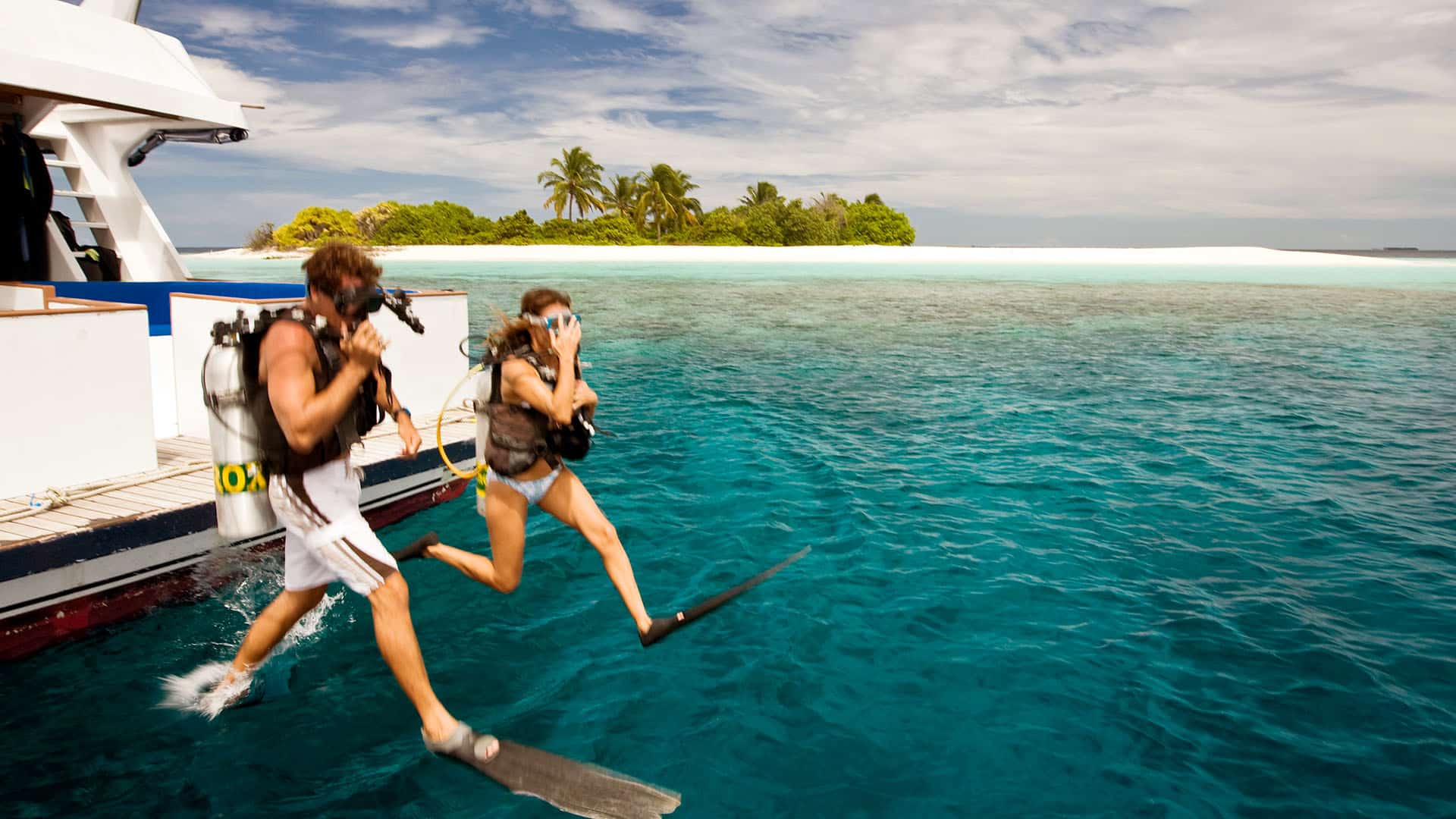
Diving’s professional bodies, the Professional Association of Diving Instructors (PADI) and Scuba Schools International (SSI), only require that students can swim 656 feet at their own pace.
So I have to be fit?
Not really. Experienced divers expend very little effort, and because you are weightless underwater, this is a sport open even to those with severe physical disabilities. However, the fitter the diver, the less air they consume, so the longer their dive times.
What happens if I’m nervous?
Most people are—it’s outside their comfort zone. Newbies usually practise in a swimming pool. Your instructor will also offer reassurance above the water and below, and ensure your safety at all times.
My ears hurt if I dive in a pool — can I still dive?
That’s the normal effect of water pressure on your eardrums. Pinch your nose, blow gently through your nostrils and the pressure equalizes. Try it. See? Easy. Most health problems among divers occur above the water: sunburn, seasickness and dehydration.
Could I run out of air?
Not if you pay attention. A gauge shows exactly how much air remains in your tank and a dive ‘buddy’ safeguards against problems.
What about the bends? Or sharks?
Novices never go deep enough to experience the bends (when a rapid ascent causes nitrogen to bubble into the bloodstream) and always learn how to surface safely. And sharks? Here’s hoping. You’re 75 times more likely to be hit by lightning than to be bitten by a shark. An encounter underwater is a privilege—ask any diver.
3 Best Dive Sites for Beginners
Maaya Thila
‘Maayafushi island is one of the gems of the North Ari Atoll; it has beautiful beaches and wonderful local plant life. Maaya Thila nearby is busy but a great first-time dive.
It starts in just 4–5m, which settles beginners, then descends in several terraces all around the thila [submerged island], the first one at around 26 feet.
So, you have different levels, progressively deeper, and on each there’s something different to see: corals, overhangs, fusilier and bluestripe snapper, turtles, grey reef sharks and sometimes whitetips. That’s an incredible diversity in such a small area.’
Ellaidhoo House Reef
This wall dive is my favorite with beginners. It starts on the surface and goes down to about 25m. It’s a good way to introduce beginners to drift dives—if there’s a strong current, they go with it, but whichever direction it flows they will end up in a sheltered position out of the flow.
Again, there’s a nice terrace, with a lot of color and a lot of fishes: groupers, moray eels, the whole plethora of reef fish species—really fantastic. Unfortunately, there are no rays or sharks—or rather, they’re deeper than 86 feet, so only seen from above. Actually, some beginners prefer that.
Bodu Thila
This is the largest of three nearby thilas and the closest to the outside rim of the atoll, so it has an amazing variety of marine life. Even in a strong current it’s accessible to beginners because it starts at a sheltered spot with sand at 10 to 13 feet.
That’s not particularly interesting, but as soon as you move off you swim over this huge field of garden eels. After that the caves start—there are caves all around—and cliff walls and overhangs that are thick with sea fans and black coral bushes. Then we ascend for a safety stop over a lumpy landscape of colorful corals.
4 More Asia-Pacific Dive Destinations for Novices
Ribbon Reefs, Australia
The Great Barrier Reef—as famous as Sydney Opera House and just as busy. The Ribbon Reefs are long, thin reef strips at the edges of this UNESCO-listed wonder and the location of one of the world’s most iconic dive sites, Cod Hole.
It’s named after the semi-tame potato cod that patrol the coral bommies (outcroppings)—they’re huge: up to 6 feet long. Dwarf minke whales also visit in June–July, yet because depths never exceed 49 feet, this stunning dive is still one that’s open to beginners.
Fiji
Reef dives offer more for newbies: more color, more fish and, because most are shallow, more time underwater. Nowhere does them like Fiji, with more than 4,000 square miles of soft coral reef.
And what corals: 390 varieties creating kaleidoscopic walls and Technicolor tunnels, all radiant thanks to the excellent visibility: up to 131 feet. Factor in warm seas and marine life with wow factor—five turtle species, manta rays and sharks (including hammerheads)—and you have the underwater naturalists’ diving dream.
Thailand
A long-established diving infrastructure, tropical seas and astonishing scenery above and below the water—there are good reasons why thousands of novices take the plunge in Thailand. So, where will you go?
To the Andaman Sea, where Shark Point and Anemone Reef near Phuket are awhirl with fish? Or to the Gulf of Thailand, where resort island Ko Samui is scalloped by shallow bays and divers’ paradise Ko Tao is a dayboat away? Tough call. And you thought diving in Thailand was easy….
Bali
Small is beautiful in Bali. The diminutive scale of Indonesia’s holiday playground allows new divers a broad taste of all that diving offers. Easy novice sites? Shore dives are abundant, while beautiful Menjangan island is well protected.
Wrecks? The USAT Liberty, torpedoed off Tulamben in World War II, is simultaneously accessible to beginners and among Asia’s greatest wreck dives. Exotic pelagic (open ocean) species? Oceanic Mola mola and astonishing manta rays soar off Nusa Penida—two species on the must-see list of any diver, however experienced.





